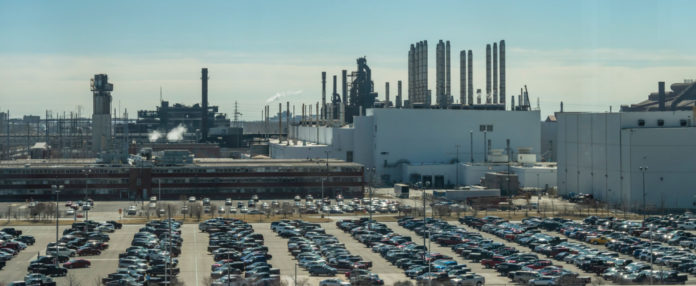
In model year 2021, the average estimated real-world carbon dioxide emission rate for all new vehicles sold in the United States fell by 2 grams per mile to 347 g/mi, the lowest ever measured, while real-world fuel economy remained at a national record of 25.4 miles per gallon, the U.S. Environmental Protection Agency reported in its 2022 automotive trends report.
The agency noted that since model year 2004, CO2 emissions have decreased 25% or 114 g/mi, and fuel economy jumped 32% or 6.1 mpg. CO2 emissions declined in 14 of the 17 years over that time.
Estimated real-world data is measured using laboratory tests to capture a wide range of operating conditions – including hot and cold weather, higher speeds and faster acceleration – encountered by an average driver.
Among the wide array of technology available to manufactures to in part achieve CO2 emissions reduction and increase fuel economy, gasoline direct injection now has an average share of 53% among the 14 largest manufacturers of vehicles sold in the U.S. Several automakers now use GDI in more than 90% of their vehicles sold in the U.S., including BMW, General Motors, Mazda, Mercedes-Benz, Volkswagen and Subaru.
In model year 2021, hybrid vehicles reached a new high of 9% of all production in the U.S. EPA attributed the increase mainly to the growth of hybrids in the truck SUV and pickup vehicle types. The combined category of electric vehicles, plug-in hybrid vehicles and fuel cell vehicles increased to 4% of production in the 2021 model year and are projected to reach 8% of production in model year 2022, due to expected growth in EV production across the industry.
The agency has collected data on every new light-duty vehicle model sold in the United States since 1975. The collection has been through either testing performed by EPA at the National vehicle and Fuel Emissions Laboratory in Ann Arbor, Michigan, or directly from manufacturers using official EPA test procedures. The data are collected to support several national programs, including EPA criteria pollutant and greenhouse gas standards, the U.S. Department of Transportation’s National Highway Traffic Safety Administration Corporate Average Fuel Economy standards and vehicle Fuel Economy and Environment labels.
The full EPA 2022 Automotive Trends Report is available for download at the EPA website.